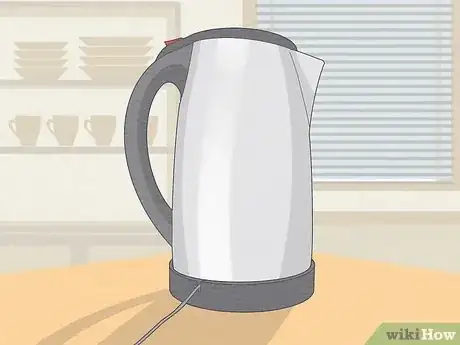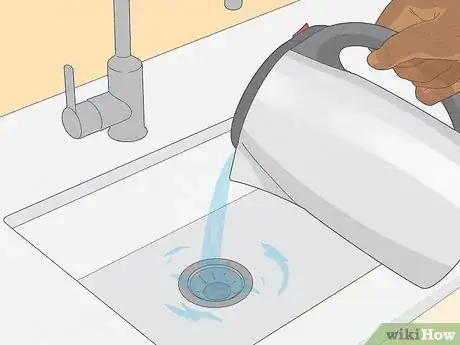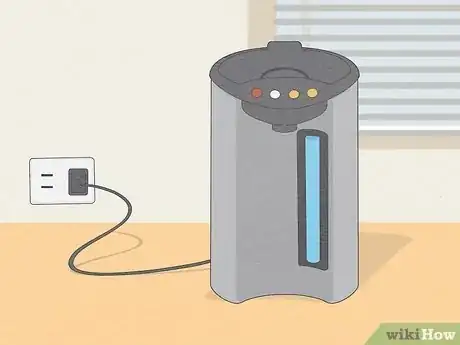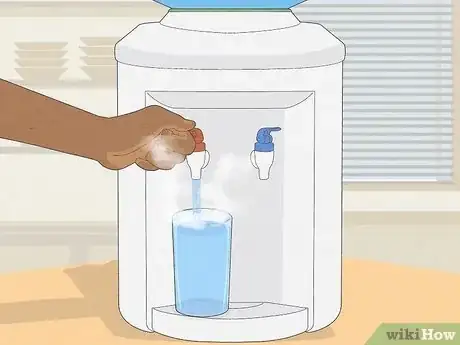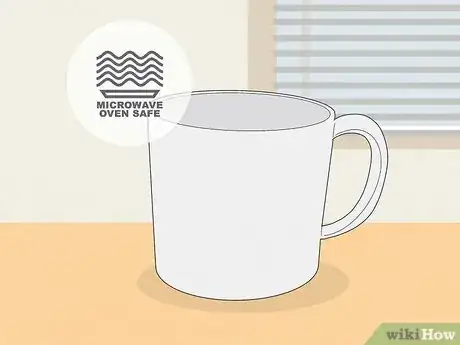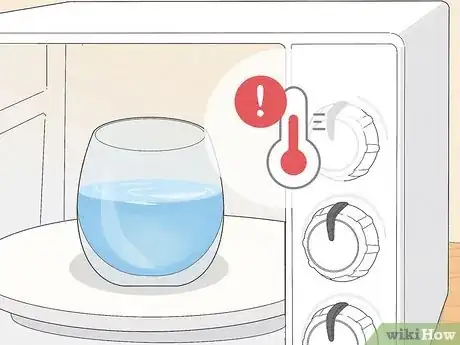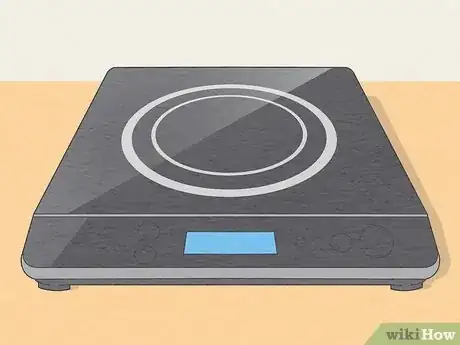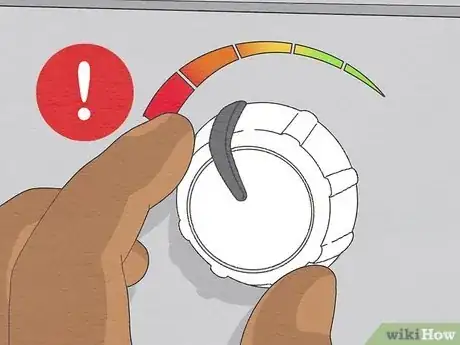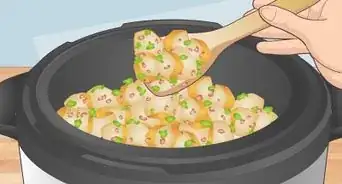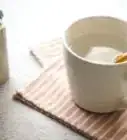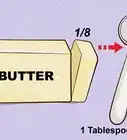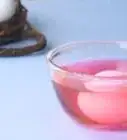X
wikiHow is a “wiki,” similar to Wikipedia, which means that many of our articles are co-written by multiple authors. To create this article, volunteer authors worked to edit and improve it over time.
This article has been viewed 2,282 times.
Learn more...
Did you know that the traditional way of boiling water on a gas stove is inefficient? A lot of the energy from the stove going into the water is not actually being used to heat it, but to heat the environment. This makes for slow boiling times. There are many ways to boil water quickly and efficiently, in a fraction of a time of a traditional stove. This wikiHow will list some of the ways to do so.
Steps
1
Use an electric kettle.
-
1Electric kettles have their heating elements inside the vessel. When water is added the heating element will be completely submerged. Electric kettles use up to 3000 W of power, depending on whether the kettle uses 110V or 220V, and depending on whether the kettle is rated for 15A or 20A, boiling water in a matter of minutes.
- Some electric kettles have a digital thermostat on them that can allow for precise setting of the temperature of the water anywhere up to 100 °C (212 °F).
-
2Take care not to overfill or underfill the kettle. If the kettle is overfilled, it may not give sufficient space for the steam to escape. If the kettle is underfilled, then it can cause the heating element and the area around it to get really hot, potentially starting a fire.Advertisement
-
3Discard the first boil and any boils after cleaning with soap and water. This boil will contain a lot of soap residue and thus not taste nice. It may also contain contaminants that make the water unsafe. After heating the water up to boiling point discard the first boil before using it.
-
4Keep the kettle clean. Only put purified or filtered water in. Do not add tea bags, coffee, milk, or anything that can potentially stain the inside of the kettle and thus make it dirty. These things can be added to the mugs later, which are much easier to clean.
- If, for some reason, your electric kettle gets dirty, rinse with water and light soap, fill and boil, then discard the water. Do not put your electric kettle in the dishwasher as you will risk damaging it.
- The electrical contacts of the kettle should never be submerged in water. Doing so can potentially create a short circuit and/or permanently damage the kettle.
- Be wary of mineral buildups that can reduce the quality of the water over time. If the inside looks dirty, give it a good rinse, boil, and discard.
Advertisement
2
Use a hot water dispenser or coffee maker.
-
1A hot water dispenser plugs into an electrical outlet and is filled with normal water. The dispenser then heats the water to boiling point as it is flowing through and is poured out. Some models allow you to set a temperature as well, like an electric kettle.
- You can also use your coffee maker as a hot water dispenser by not putting a coffee pod inside the brewing chamber.
-
2Clean the dispenser before first use. You probably do not want to use the hot water dispenser if you just got it. Before plugging it in, let the water run through both the hot and the cold taps. Discard the water that comes out.
-
3Run the water if someone has just brewed coffee or tea from your coffee maker. This will remove almost all of the coffee or tea particles from the chamber. After you should have pure and clean hot water.
Advertisement
3
Use a microwave.
-
1Microwave ovens can heat small quantities of water to boiling in a couple of minutes. The way it works is by sending out high-amplitude, low-frequency microwaves (2.45 GHz) into the oven. Some of the waves are absorbed by the water, which heats them up as thermal energy.
-
2Make sure to use a microwave-safe dish. Metals will get way too hot in the microwave or burn. Certain plastics will melt into the water which may be carcinogenic. Other dishes do a great job of absorbing heat just as well as water and thus are not safe for the microwave.
-
3Be careful not to superheat the water. Superheated water is water that is way above boiling point but that is not boiling. Superheating occurs when there are very few minerals in the water, when the dishware is too smooth for bubbles to form, and when the water is heated for too long. Each of these things causes the water to be held together by surface tension. If superheated water is jostled even slightly it can violently erupt out of the container, causing serious burns.
Advertisement
4
Use an induction cooktop.
-
1Induction has minimal energy losses because the energy is transferred electromagnetically to the cookware. An induction cooktop can in some cases be faster than an electric kettle. Set the cooktop to high for the fastest boiling.
-
2Make sure to use a kettle or pot that can work with induction. If your kettle is made of stainless steel or cast iron, it probably will work. If it is made of copper or aluminum, it probably will not.
-
3Keep the induction cooktop scratch-free by making sure not to rub any cookware on its ceramic surface. After you are done cooking, make sure to use the dedicated handles to lift the cookware. This will minimize scratching on both the cookware and the cooktop.
Advertisement
5
Use a ceramic or electric-resistive cooktop.
-
1A ceramic cooktop radiates infrared heat in a circle right at the bottom of the cookware. This maximizes the energy captured by the cookware and minimizes the energy lost to the environment.
-
2An electric-resistive cooktop radiates heat using a heating element to heat up the cookware. The energy is then transferred directly from the heating element to the cookware and into the water through conduction.
Advertisement
Warnings
- The cookware and water will be extremely hot. Please take care not to accidentally burn yourself.⧼thumbs_response⧽
- Always turn off and/or unplug kitchen appliances you are not using to reduce the fire risk.⧼thumbs_response⧽
Advertisement
About This Article
Advertisement
